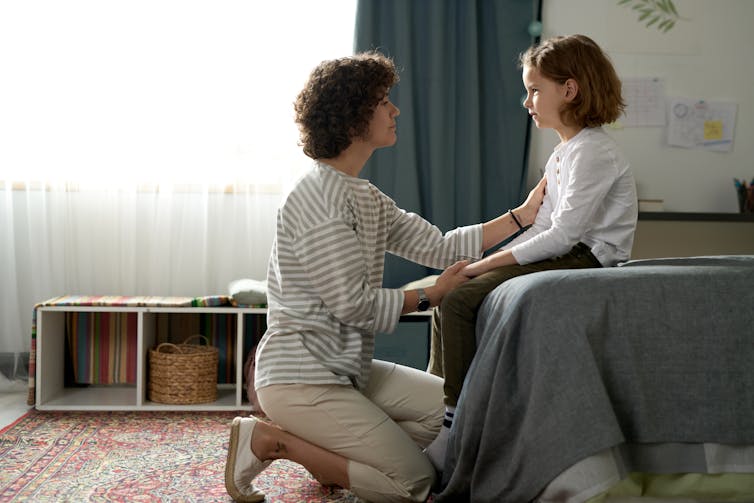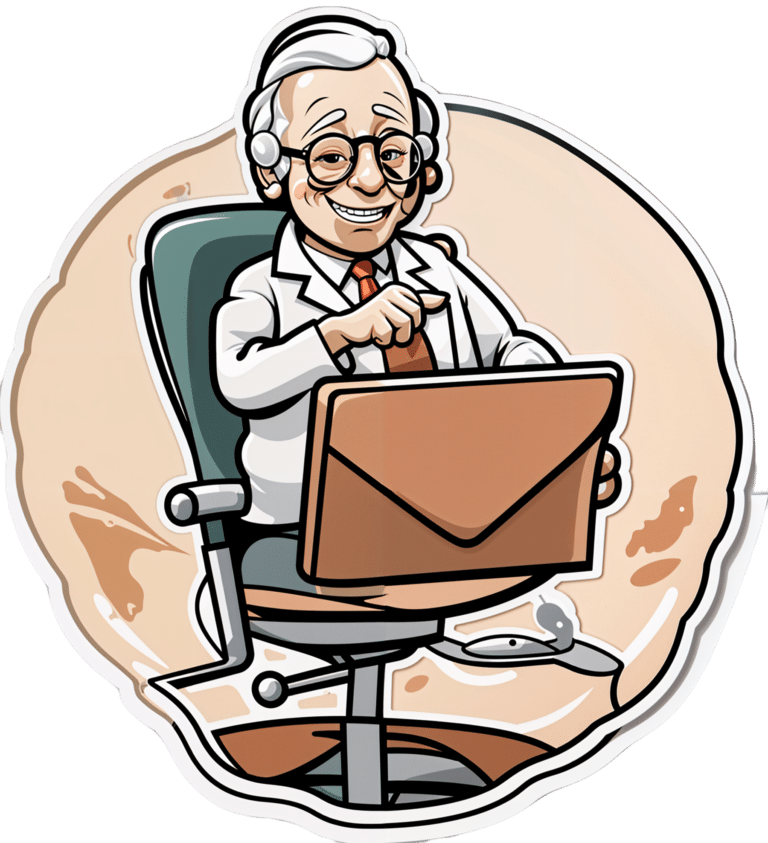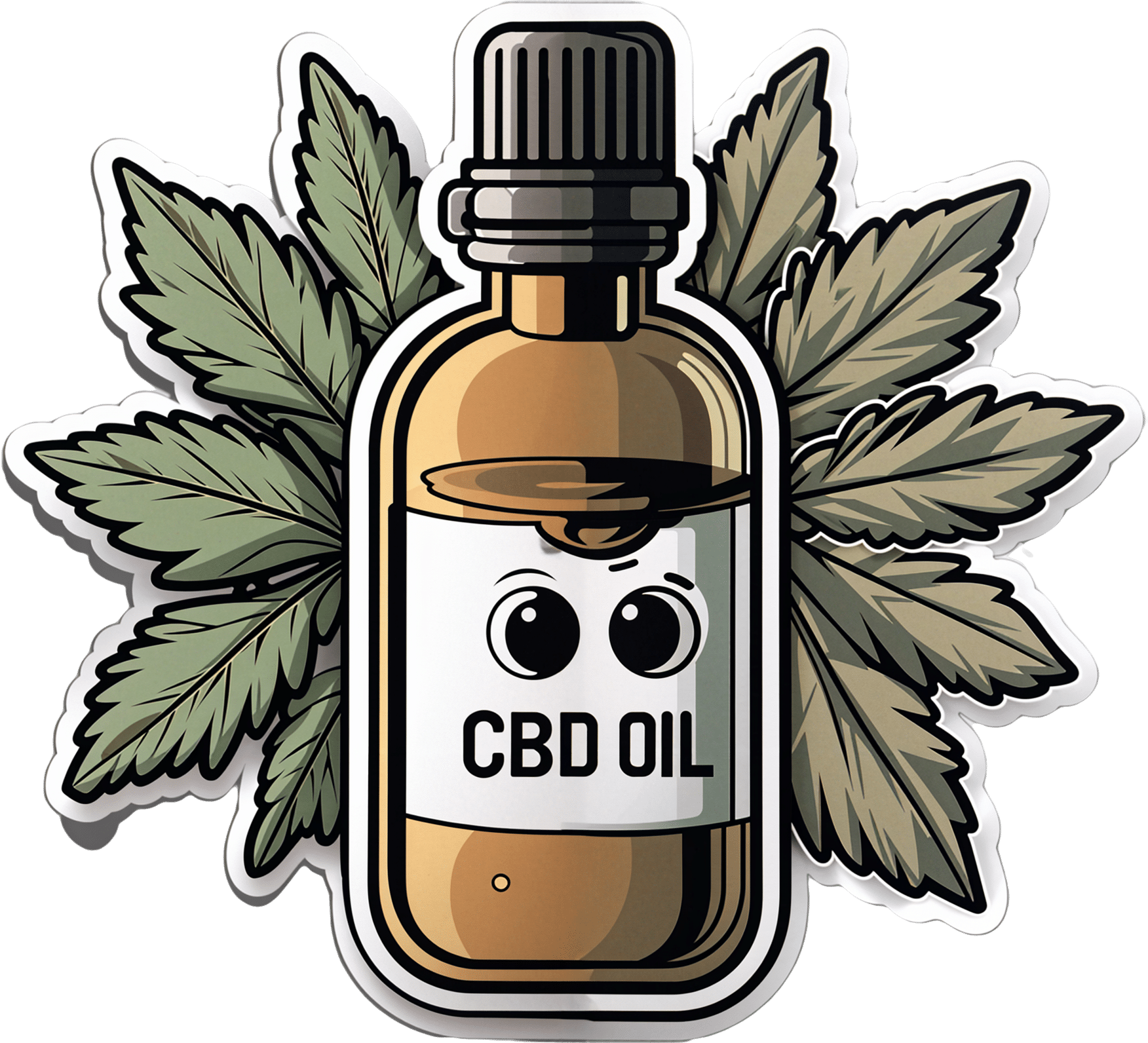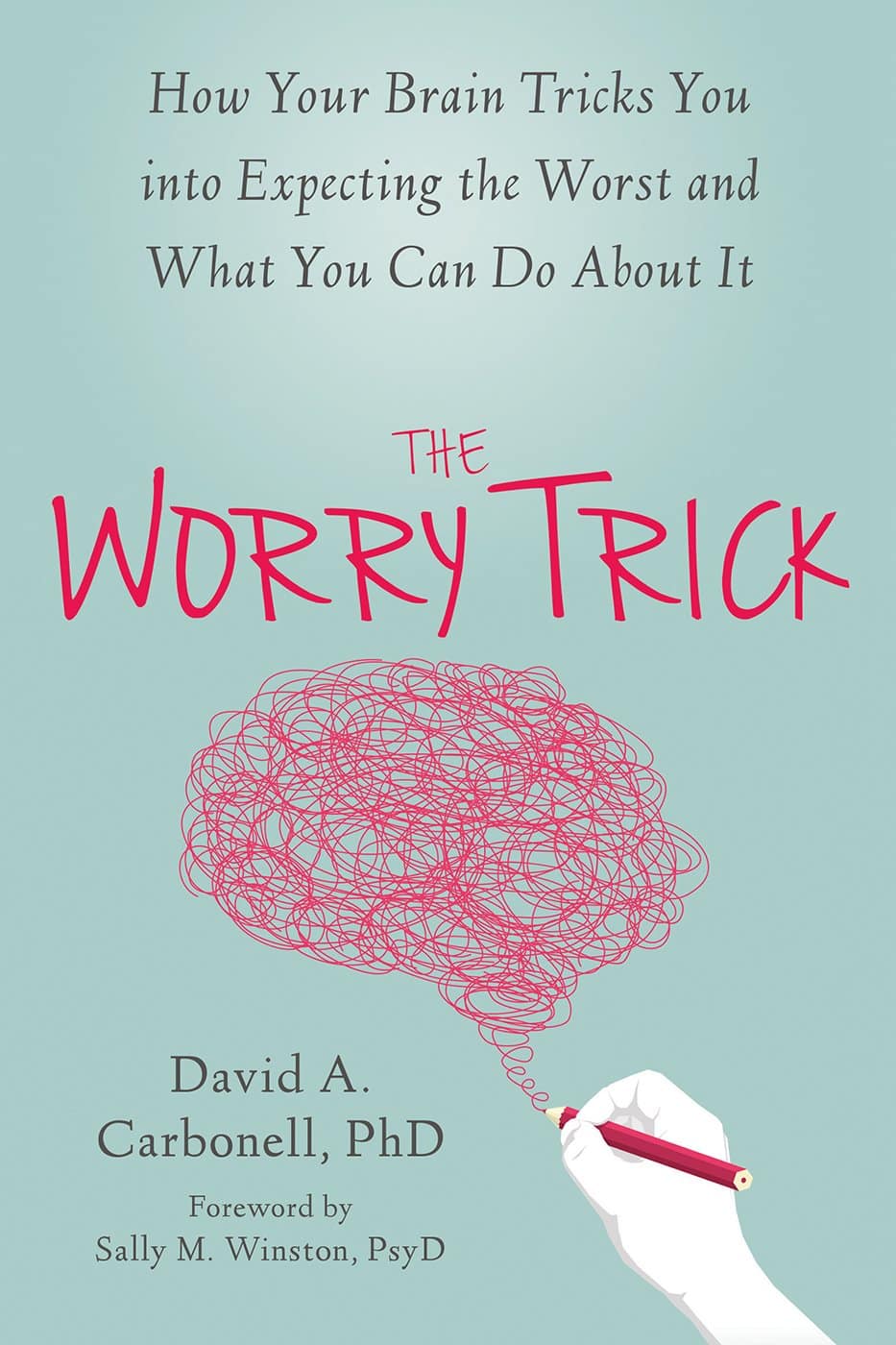
Bushfire smoke affects children differently. Here’s how to protect them
10almonds is reader-supported. We may, at no cost to you, receive a portion of sales if you purchase a product through a link in this article.
Bushfires are currently burning in Australian states including Victoria, Tasmania, Western Australia and South Australia. In some areas, fire authorities have warned residents about the presence of smoke.
Bushfire smoke is harmful to our health. Tiny particles of ash can lodge deep in the lungs.
Exposure to this type of smoke may worsen existing conditions such as asthma, and induce a range of health effects from irritation of the eyes, nose and throat to changes in the cardiovascular system.
Public health recommendations during smoke events tend to provide general advice, and don’t often include advice specifically geared at children. But children are not just little adults. They are uniquely vulnerable to environmental hazards such as bushfire smoke for a number of reasons.
Different physiology, different behaviour
Children’s lungs are still developing and maturing.
Airways are smaller in children, especially young children, which is associated with greater rates of particle deposition – when particles settle on the surfaces of the airways.
Children also breathe more air per kilogram of body weight compared with adults, and therefore inhale more polluted air relative to their size.
Further, children’s detoxification systems are still developing, so environmental toxins take longer to effectively clear from their bodies.
Meanwhile, children’s behaviour and habits may expose them to more environmental toxins than adults. For example, they tend to do more physical activity and spend more time outdoors. Higher levels of physical activity lead to more air inhaled per kilogram of body weight.
Also, a normal and important part of children’s early play is exploring their environment, including by putting things in their mouth. This can result in kids ingesting soil, dust and dirt, which often contain environmental contaminants.
For these reasons, it’s important to consider the specific needs of children when providing advice on what to do when there’s smoke in the air.
Keeping our environments healthy
The Australian government offers recommendations for minimising the health risks from exposure to bushfire smoke. The main advice includes staying indoors and keeping doors and windows closed.
This is great advice when the smoke is thick outside, but air pollutants may still accumulate inside the home. So it’s important to air your home once the smoke outside starts to clear. Take advantage of wind changes to open up and get air moving out of the house with a cross breeze.
Kids are natural scientists, so get them involved. For example, you and your child can “rate” the air each hour by looking at a landmark outside your home and rating how clearly you can see it. When you notice the haze is reducing, open up the house and clear the air.
Because air pollutants settle onto surfaces in our home and into household dust, an easy way to protect kids during smoky periods is to do a daily dust with a wet cloth and vacuum regularly. This will remove pollutants and reduce ingestion by children as they play. Frequent hand washing helps too.
Healthy bodies and minds
Research exploring the effects of bushfire smoke exposure on children’s health is sparse. However, during smoke events, we do see an increase in hospital visits for asthma, as well as children reporting irritation to their eyes, nose and throat.
If your child has asthma or another medical condition, ensure they take any prescribed medications on a regular schedule to keep their condition well controlled. This will minimise the risk of a sudden worsening of their symptoms with bushfire smoke exposure.
Make sure any action plans for symptom flare-ups are up to date, and ensure you have an adequate supply of in-date medication somewhere easy to locate and access.

Media_Photos/Shutterstock
Kids can get worried during bushfires, and fire emergencies have been linked with a reduction in children’s mental health. Stories such as the Birdie’s Tree books can help children understand these events do pass and people help one another in times of difficulty.
Learning more about air pollution can help too. Our group has a children’s story explaining how air pollution affects our bodies and what can help.
It’s also important for parents and caregivers not to get too stressed, as children cope better when their parents manage their own anxiety and help their children do the same. Try to strike a balance between being vigilant and staying calm.
What about masks?
N95 masks can protect the wearer from fine particles in bushfire smoke, but their use is a bit complicated when it comes to kids. Most young children won’t be able to fit properly into an N95 mask, or won’t tolerate the tight fit for long periods. Also, their smaller airways make it harder for young children to breathe through a mask.
If you choose to use an N95 mask for your children, it’s best to save them for instances when high-level outdoor exposure is unavoidable, such as if you’re going outside when the smoke is very thick.
N95 masks should be replaced after around four hours or when they become damp.
If your child has an existing heart or lung condition, consult their doctor before having them wear an N95 mask.
Our team is currently recruiting for a study exploring the effects of bushfire smoke in children. If you live in south east Queensland and are interested in participating in the event of a bushfire or hazard reduction burn near your home, please express your interest here.
Dwan Vilcins, Group leader, Environmental Epidemiology, Children’s Health Environment Program, The University of Queensland; Nicholas Osborne, Associate Professor, School of Public Health, The University of Queensland, and Paul D. Robinson, Conjoint Professor in Respiratory and Sleep Medicine, Child Health Research Centre, The University of Queensland
This article is republished from The Conversation under a Creative Commons license. Read the original article.
Don’t Forget…
Did you arrive here from our newsletter? Don’t forget to return to the email to continue learning!
Recommended
Learn to Age Gracefully
Join the 98k+ American women taking control of their health & aging with our 100% free (and fun!) daily emails:
-
Q&A with the 10almonds Team
Q: Very interested in this article on CBD oil in the states. hope you do another one in the future with more studies done on people and more information on what’s new as far as CBD oil goes
A: We’re glad you enjoyed it! We’ll be sure to revisit CBD in the future—partly because it was a very popular article, and partly because, as noted, there is a lot going on there, research-wise!
And yes, we prefer human studies rather than mouse/rat studies where possible, too, and try to include those where we find them. In some cases, non-human animal studies allow us to know things that we can’t know from human studies… because a research institution’s ethics board will greenlight things for mice that it’d never* greenlight for humans.
Especially: things that for non-human animals are considered “introduction of external stressors” while the same things done to humans would be unequivocally called “torture”.
Animal testing in general is of course a moral quagmire, precisely because of the suffering it causes for animals, while the research results (hopefully) can be brought to bear to reduce to suffering of humans. We’re a health and productivity newsletter, not a philosophical publication, but all this to say: we’re mindful of such too.
And yes, we agree, when studies are available on humans, they’re always going to be better than the same study done on mice and rats.
As a topical aside, did you know there’s a monument to laboratory mice and all they’ve (however unintentionally) done for us?
❝The quirky statue depicts an anthropomorphic mouse as an elderly woman, complete with glasses balanced atop its nose. Emerging from two knitting needles in its hands is the recognizable double-helix of a strand of DNA.❞
~ Smithsonian Magazine
Share This Post
-
The Other Alzheimer’s Risk Factor
10almonds is reader-supported. We may, at no cost to you, receive a portion of sales if you purchase a product through a link in this article.
The usually-listed 7 known risk factors of dementia (in general, not just Alzheimer’s) do not include today’s item. For a recap, those were:
The 7 Known Risk Factors For Dementia
The bonus risk factor
This idea is not completely novel; it’s been known for a while that traumatic brain injury (TBI) can increase the risk of dementia, but it has generally been chalked up to “if you damage an organ, then that organ does not function so well afterwards”.
However, in the case of Alzheimer’s, it seems there’s something deeper at play. Specifically, a study that found…
❝…traumatic brain injury alters the small vessels in the brain, resulting in an accumulation of amyloid beta—a hallmark of Alzheimer’s disease.
The findings suggest that vascular dysfunction could be an early driver in neurodegenerative disorders rather than being caused by neuronal damage.❞
This association held true even in quite young patients!
The study from Sweden looked at brain tissue from TBI patients (who had had to have brain tissue removed for medical reasons due to bleeding and swelling), and found that the (traumatic) changes to the vascular smooth muscle cells were associated with increased aggregation of amyloid-β.
In terms of establishing cause and effect: since it could be safely concluded the amyloid-β had not caused the TBI (which all had external explanations such as “car crash” or such), it can be deduced that almost* certainly the TBI caused the amyloid-β aggregation.
*because little to nothing in science is every truly certain. As in life in general, really; the difference is that scientists admit it!
You may be wondering: what was the control? It would be a very generous group of citizens indeed who would volunteer bits of their brains that hadn’t needed removing. However, the answer is that the control brain bits came from a biobank, and were from uninjured patients with no history of TBI or neurodegenerative disorders, and who had died from systemic, unrelated causes. Having been dead for a matter of hours, and the fixation time for the brain bits from the living people taking long enough that everybody’s brain bits had been out of their respective living bodies for a similar length of time, this was deemed an acceptable, if imperfect, control.
You can read the study in its entirety here; it is fascinating:
The practical take-away
The practical take-away, of course, is: look after your brain
Not just in the sense of eat fiber, get healthy fats, move more, get good sleep, stay intellectually stimulated, etc*, but also in the sense of “keep your brain physically safe”.
Now, you may think that you already try not to get into car crashes, and perhaps you do not compete in contact sports, but do be aware that one of the leading causes of TBI in older people is, ignominiously, falling down.
And if you think “that only happens to older/other people”, then be aware: there’s a first time for everything and you are not immune. With that in mind, do check out:
Fall Special! ← the seasonal title notwithstanding, this is about not falling down in the first place, and being less injurable if you do fall down
*This was a modest and vague list for brevity’s sake, so for much more detail, enjoy:
How To Reduce Your Alzheimer’s Risk ← this is rather more comprehensive
Want to know more?
Here you can read about the largest study of its kind into lifestyle factors and Alzheimer’s disease:
Alzheimer’s Causative Factors To Avoid ← the methods and conclusions of Dr. David Snowdon’s famous “Nun Study”
Take care!
Share This Post
-
Everything you need to know about cervical cancer
10almonds is reader-supported. We may, at no cost to you, receive a portion of sales if you purchase a product through a link in this article.
Every year, around 11,500 new cases of cervical cancer are diagnosed in the U.S. While cervical cancer used to be one of the most common causes of cancer death for U.S. women, the vaccine against the human papillomavirus (HPV), and increased early screening and detection have resulted in a decrease in rates.
“Cervical cancer is almost always preventable and typically diagnosed in patients who have either never had a screening test or have gone many years without one,” says Fred Wyand, director of communications at the American Sexual Health Association, which includes the National Cervical Cancer Coalition.
January is Cervical Cancer Awareness Month, so we spoke to experts to learn more about what it is, its symptoms, and what you can do to prevent it.
What is cervical cancer?
Cervical cancer is a type of cancer that starts in the cervix—the lower part of the uterus that connects the vagina to the uterus. Cervical cancer can affect anyone with a cervix but is most frequently diagnosed in women ages 35 to 44, according to the American Cancer Society.
There are two types:
- Squamous cell carcinoma: Cervical cancer that starts in the thin squamous cells on the outside of the cervix. This is the most common type of cervical cancer.
- Adenocarcinoma: Cervical cancer that starts in glandular cells that line the inside of the cervix. This type of cervical cancer is less common.
In some cases, cervical cancer has features of both types.
What causes cervical cancer?
Almost all cases of cervical cancer are caused by high-risk cases of HPV, a virus that is spread through sexual activity or other close skin-to-skin contact. But don’t panic: HPV is very common, and getting HPV doesn’t always mean you’ll get cervical cancer. Around 85 percent of people in the U.S. will get an HPV infection in their lifetime, but for most people, the virus clears on its own.
However, there are many strains of HPV, and some are linked to cervical cancer. In those cases, when the virus does not clear on its own and the HPV infection persists, it can cause a range of cancers in both men and women, including cancers of the cervix, anus, penis, throat, and vagina.
That’s why HPV vaccination is so important for all people: It can help prevent many types of cancer, including cervical cancer caused by those high-risk HPV infections.
What are the symptoms of cervical cancer?
Cervical cancer doesn’t usually have symptoms in its early stages, but once cancer begins to spread, the symptoms can include:
- Vaginal bleeding between periods, after sexual intercourse, or after menopause.
- Heavier and longer menstrual periods than usual.
- Vaginal discharge that has a strong odor and is watery.
- Pelvic pain or pain during sexual intercourse.
In more advanced stages, symptoms of cervical cancer can include:
- Leg swelling.
- Difficult or painful bowel movements or bleeding during a bowel movement.
- Blood in urine or difficulty urinating.
- Back pain.
“Most women present with no symptoms,” Dr. Kristina A. Butler, gynecologic oncologist at Mayo Clinic, tells PGN. “Therefore, the checkups with visualization of the cervix, speaking with your provider, and having a Pap smear are so important.”
How can you help prevent or reduce your risk for cervical cancer?
Vaccination: Cervical cancer is highly preventable. The most effective way to help protect yourself from it is by getting the HPV vaccine. The HPV vaccine is most effective before a person is first exposed to HPV, typically before becoming sexually active.
“If we are able to vaccinate children before they become adults [and] are subsequently exposed, those individuals are maximally protected against the [worst effects] of the virus, which could ultimately be cancer,” Butler adds.
You’re eligible to get the vaccine if you’re between 9 and 45 years old, but there are specific guidelines for each age group. The Centers for Disease Control and Prevention recommends HPV vaccination for children ages 11 or 12 (though it can start at 9 years).
The CDC says that you can get catch-up doses until you’re 26 if you didn’t get vaccinated earlier, but if you’re between 26 and 45 years old, you should talk to your health care provider about your individual risk for HPV and to see if you should get the vaccine.
Screenings: This is another effective way to prevent cervical cancer.
Dr. Deanna Gerber, a gynecologic oncologist at NYU Langone’s Laura and Isaac Perlmutter Cancer Center, tells PGN that regular screenings can catch HPV before it has a chance to become cancer.
“Now that we’re encouraging people to see their gynecologist and get screening more regularly, we’re catching cancer at earlier stages,” she says.
Screenings for cervical cancer include:
- Pap smear: During a Pap smear, also known as a Pap test, cells are collected from your cervix to find precancerous or cervical cancer cells. Pap smears should start at 21 years old, regardless of when you start having sex.
If you’re between 21 and 29, you should get a Pap smear every three years. If you’re 30 to 65 years old, it’s recommended you get one every three years, a Pap and HPV test together every five years, or an HPV test alone every five years.
- HPV test: During an HPV test, cells are collected from your cervix to look for infection with high-risk HPV strains that can cause cervical cancer. If you’re between 21 and 30 years old, it’s only recommended that you get an HPV test if you had an abnormal Pap smear result. After 30, an HPV test is recommended with a Pap smear every five years, as long as other results were normal.
(People over 65 years old should talk to their health care provider about whether they need screening.)
Not smoking: Avoiding smoking can reduce your risk of developing cervical cancer because “HPV and smoking tobacco work together to accelerate the negative effects of HPV,” says Gerber.
Wearing condoms: Although condoms don’t completely prevent HPV infection, they provide some protection. And according to the CDC, the use of condoms has been associated with a lower rate of cervical cancer.
There is hope with early detection
There is hope for people diagnosed with cervical cancer. “Compared to the survival [rates] 10 years ago, women survive much longer now with the great treatments we have,” adds Butler.
Some of those treatments and advances include radiation, chemotherapy, and surgical therapy.
And while there may be some stigma surrounding sexual health, it’s important to advocate for yourself, says Gerber.
“Being comfortable and bold talking to your doctor about your health or any concerns that you have, feeling comfortable with your provider by asking all these questions is really the best thing you can do.”
For more information, talk to your health care provider.
This article first appeared on Public Good News and is republished here under a Creative Commons license.
Share This Post
Related Posts
-
Resistance Is Useful! (Especially As We Get Older)
10almonds is reader-supported. We may, at no cost to you, receive a portion of sales if you purchase a product through a link in this article.
Resistance Is Useful!
At 10almonds we talk a lot about the importance of regular moderate exercise (e.g. walking, gardening, housework, etc), and with good reason: getting in those minutes (at least 150 minutes per week, so, a little over 20 minutes per day, or 25 minutes per day with one day off) is the exericise most consistently linked to better general health outcomes and reduced mortality risk.
We also often come back to mobility, because at the end of the day, being able to reach for something from a kitchen cabinet without doing oneself an injury is generally more important in life than being able to leg-press a car.
Today though, we’re going to talk about resistance training.
What is resistance training?
It can be weight-lifting, or it can be bodyweight exercises. In those cases, what you’re resisting is gravity. It can also be exercises with resistance bands or machines. In all cases, it’s about building and/or maintaining strength.
Why does it matter?
Let’s say you’re not an athlete, soldier, or laborer, and the heaviest thing you have to pick up is a bag of groceries. Strength still matters, for two main reasons:
- Muscle strength correlates to bone strength. You can’t build (or maintain) strong muscles on weak bones, so if you take care of your muscles, then your body will keep your bones strong too.
- That’s assuming you have a good diet as well—but today’s not about that. If you’d like to know more about eating for bone health though, do check out this previous article about that!
- Muscle strength correlates to balance and stability. You can’t keep yourself from falling over if you are physically frail.
Both of those things matter, because falls and fractures often have terrible health outcomes (e.g., slower recovery and more complications) the older we get. So, we want to:
- Ideally, not fall in the first place
- If we do fall, have robust bones
See also: Effects of Resistance Exercise on Bone Health
How much should we do?
Let’s go to the Journal of Strength and Conditioning Research on this one:
❝There is strong evidence to support the benefits of resistance exercise for countering many age-related processes of sarcopenia, muscle weakness, mobility loss, chronic disease, disability, and even premature mortality.
In addition, this Position Statement provides specific evidence-based practice recommendations to aid in the implementation of resistance exercise programs for healthy older adults and those with special considerations.
While there are instances where low-intensity, low-volume programs are appropriate (i.e., beginning programs for individuals with frailty or CVDs), the greatest benefits are possible with progression to moderate to higher intensity programs.❞
~ Fragala et al
Read the statement in full:
There’s a lot of science there and it’s well worth reading if you have the time. It’s particularly good at delineating how much is not enough vs how much is too much, and the extent to which we should (or shouldn’t) train to exhaustion.
If you don’t fancy that, though, and/or just want to start with something accessible and work your way up, the below is a very good (and also evidence-based) start-up plan:
Healthline’s Exercise Plan For Seniors—For Strength, Balance, & Flexibility
(it has a weekly planner, step-by-step guides to the exercises, and very clear illustrative animations of each)
Don’t Forget…
Did you arrive here from our newsletter? Don’t forget to return to the email to continue learning!
Learn to Age Gracefully
Join the 98k+ American women taking control of their health & aging with our 100% free (and fun!) daily emails:
- Muscle strength correlates to bone strength. You can’t build (or maintain) strong muscles on weak bones, so if you take care of your muscles, then your body will keep your bones strong too.
-
The Worry Trick – by Dr. David Carbonell
10almonds is reader-supported. We may, at no cost to you, receive a portion of sales if you purchase a product through a link in this article.
Worry is a time-sink that rarely does us any good, and often does us harm. Many books have been written on how to fight anxiety… That’s not what this book’s about.
Dr. David Carbonell, in contrast, encourages the reader to stop trying to avoid/resist anxiety, and instead, lean into it in a way that detoothes it.
He offers various ways of doing this, from scheduling time to worry, to substituting “what if…” with “let’s pretend…”, and guides the reader through exercises to bring about a sort of worry-desensitization.
The style throughout is very much pop-psychology and is very readable.
If the book has a weak point, it’s that it tends to focus on worrying less about unlikely outcomes, rather than tackling worry that occurs relating to outcomes that are likely, or even known in advance. However, some of the techniques will work for such also! That’s when Dr. Carbonell draws from Acceptance and Commitment Therapy (ACT).
Bottom line: if you would like to lose less time and energy to worrying, then this is a fine book for you.
Click here to check out The Worry Trick, and repurpose your energy reserves!
Don’t Forget…
Did you arrive here from our newsletter? Don’t forget to return to the email to continue learning!
Learn to Age Gracefully
Join the 98k+ American women taking control of their health & aging with our 100% free (and fun!) daily emails:
-
Almond Butter vs Cashew Butter – Which is Healthier?
10almonds is reader-supported. We may, at no cost to you, receive a portion of sales if you purchase a product through a link in this article.
Our Verdict
When comparing almond butter to cashew butter, we picked the almond.
Why?
It’s not just our pro-almonds bias! And of course exact nutritional values may vary depending on the recipe, but we’re using the USDA’s standardized figures which should represent a reasonable average. Specifically, we’re looking at the USDA entries for “[Nut] butter, plain, without salt added”.
In terms of macros, almond butter takes the lead immediately with nearly 2x the protein and over 3x the fiber. In contrast, cashew butter has 1.5x the carbs, and the two nut butters are approximately equal on fat. An easy win for almond butter so far.
When it comes to vitamins, almond butter has more of vitamins A, B2, B3, B5, E, and choline, while cashew butter has more of vitamins B1, B6, and K. Thus, a 6:3 win for almond butter.
In the category of minerals, things are closer, but almond butter has more calcium, magnesium, manganese, phosphorus, and potassium, while cashew butter has more copper, iron, zinc, and selenium. So, a 5:4 win for almond butter.
In short, these three wins for almond butter add up to one total win for almond butter, unless you have a pressing reason to have different priorities in what you’re looking for in terms of nutrition.
Enjoy both, of course! Unless you are allergic, in which case, please don’t.
Want to learn more?
You might like to read:
Why You Should Diversify Your Nuts
Take care!
Don’t Forget…
Did you arrive here from our newsletter? Don’t forget to return to the email to continue learning!
Learn to Age Gracefully
Join the 98k+ American women taking control of their health & aging with our 100% free (and fun!) daily emails:







